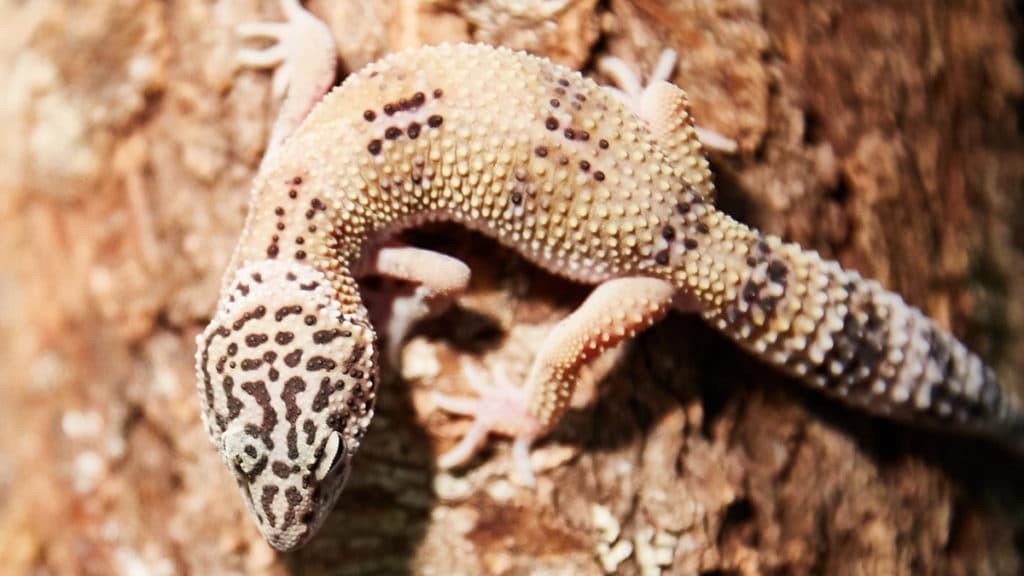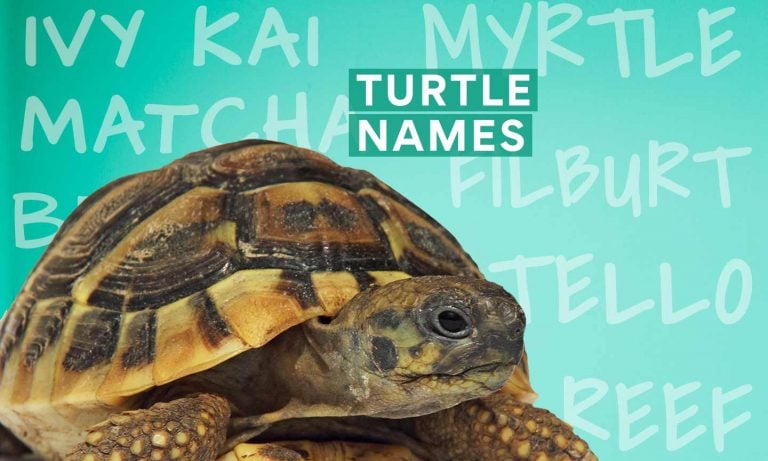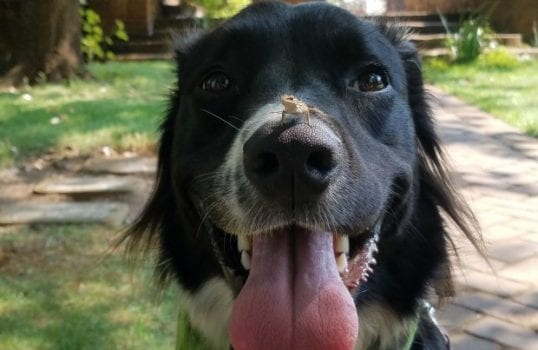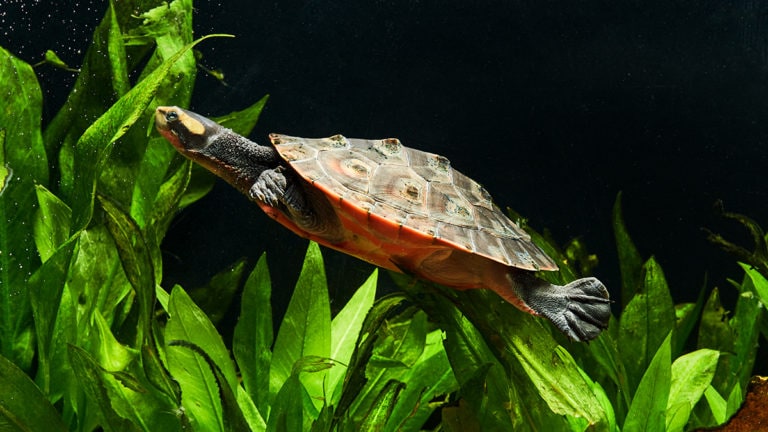If you’re looking to add reptiles to your family, geckos are a great and popular choice. They’re ideal pet lizards for beginners. Not only are geckos interesting pets that are so unique looking—you might even say they’re adorable, but they’re also relatively low-maintenance. While there are 2,000 types of geckos worldwide, only a few are bred to be pets, and each has varying levels of care to consider when choosing the right one for you.
“Certain gecko species are relatively low maintenance and forgiving for new reptile owners, though they still need owners to do research to determine proper husbandry before coming home,” says Dr. Kristin Gill, DVM, at Blue Pearl Specialty & Emergency Pet Hospital in Sarasota, Florida.
And “all reptiles can carry salmonella as part of their normal gut flora,” she says, so always wash your hands after handling them.
To help, here is a primer on the three most popular types of geckos that make great pets and what you’ll need to properly care for them.
1. Leopard Geckos
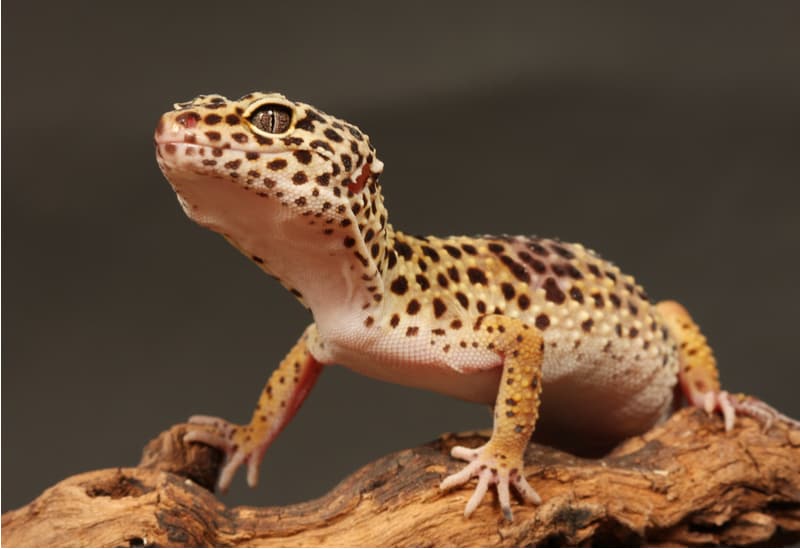
Reinhold Leitner/Shutterstock.com
Leopard geckos are easy to care for, making making them one of the best pet lizards for beginners and children over the age of 8. With an average length of 9 inches, leopard geckos are easy to handle and have a gentle disposition. They come in a multitude of colors, patterns and eye colors—even red.
Their habitat should consist of a well-ventilated terrarium—10 gallons or larger—with enough room for a heated side, a cool side and at least one hiding area with substrate where they can relax and sleep. Leopard geckos need a basking site at one end of the habitat heated to about 88 degrees Fahrenheit. Infrared or low-wattage incandescent bulbs are ideal heating sources. You also can use an under the habitat (UTH) heater or a basking spot lamp.
Because geckos are nocturnal, ultraviolet lighting isn’t required—although it’s recommended—as long as their diet contains the vitamin D3 they need to stay healthy. To keep their terrarium looking tidy and more like their natural habitat, you can line the bottom of the habitat with a substrate such as tiles, stones and newspaper .
Leopard geckos are insectivores and should be given a diet of live insects, such as mealworms and gut loaded crickets that are fed nutrients reptiles need to stay healthy, or a commercial diet. Always provide fresh water in a shallow dish, like the Pangea Ultimate Gecko Ledge Reptile Bowl.
2. Crested Geckos

Luna Summer/Shutterstock.com
Named for the fringed crests that run across their eyes, neck and back, crested geckos resemble little dragons, making them really cool pet lizards for kids 10 and older. They are a little smaller than leopard geckos and grow to be about 8 inches in length.
While they can be held, crested geckos tend to be skittish, so holding them can be tricky. To help them get accustomed to being held, try holding them for only a few minutes at first, and use the “hand walking” method by holding one hand out in front of the other, then switching hands as your gecko walks from the extended hand to the other.
Crested geckos are primarily tree climbers and require a terrarium that is 20 gallons or larger, preferably vertical. They’ll need enough room for a heated area, a cool area to keep their temperature regulated and foliage to climb on.
The easiest way to heat your crested gecko’s habitat is with a low-wattage incandescent bulb or ceramic heat emitter. Keep the heated side between 78 and 82 degrees Fahrenheit, and use a thermometer to ensure proper temperatures.
Because crested geckos are nocturnal, ultraviolet lights are not required if their diet provides them with vitamin D3. Line the habitat with a substrate to keep it tidy and looking like their natural environment. These geckos require a humid environment, so you’ll want to mist dry areas with water or use a humidifier to maintain 70 percent humidity.
The primary diet for crested geckos is fruit and insects like gut loaded crickets that contain the necessary nutrients to keep your pet lizard healthy. If you’re not keen on feeding live food, you can choose a commercially prepared diet like Pangea Fruit Mix Gecko Diet with Watermelon Food. To appeal to their natural hunting instincts and provide them with an enriching activity, give them gut loaded crickets as a treat a few times a week. Keep fresh water in a shallow dish available for them at all times.
3. African Fat-Tailed Geckos
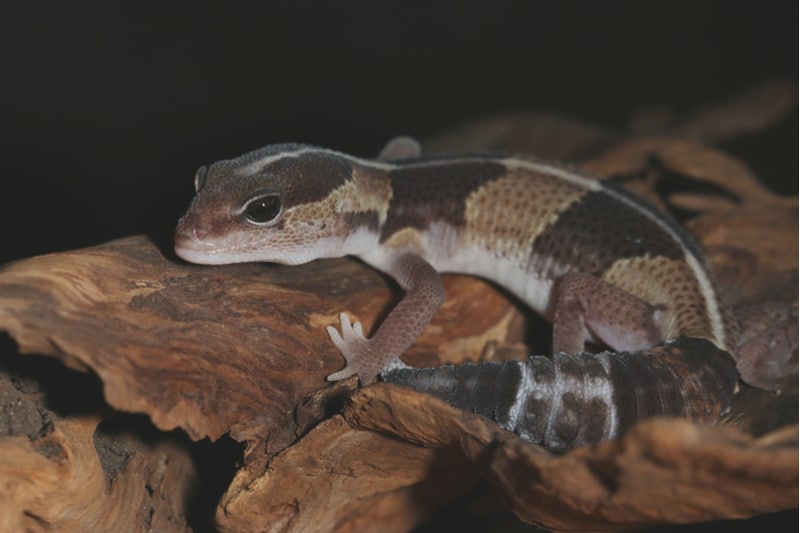
Jiri Prochazka/Shutterstock.com
Known for their plump tails, slow movements and docile temperaments, African fat-tailed geckos are fun pets for new owners and kids over the age of 8. Adults grow to be 7-9 inches long, and while they can be shy, they tolerate being held and can become tame with regular handling.
These pet geckos do not like being constrained, so take special care when handling them. Use open hands and never hold them by their tails. They will detach their tails as a defense mechanism and though it will regenerate, it will have a different appearance than its original shape.
Your African fat-tailed gecko’s habitat should be a terrarium 10 gallons or larger, with enough room for a heated side with a temperature of 90 degrees Fahrenheit and a cool side ranging in the high 70s to low 80s. Use an under-tank heater or heat tape with a thermostat control. African fat-tails also need light for about 10-12 hours a day, but because they are nocturnal, ultraviolet light is not required as long as their diet contains the necessary amount of vitamin D3.
Provide them with a moist hiding area to sleep and relax, and line the habitat with a substrate to keep it looking tidy and encourage burrowing. Mist the habitat a few times a week to maintain proper humidity levels.
African fat-tail geckos eat mostly insects like mealworms and gut loaded crickets that contain essential vitamins and nutrients, but they also can eat commercial diets like Pangea Fruit Mix Gecko Diet with Insects Food. Provide fresh water in a shallow dish at all times.
Whatever species of gecko you choose, you and your family will enjoy caring for and interacting with your new pet. Their interesting diets, ability to be handled and unique characteristics make them arguably the best pet lizards for budding enthusiasts and can help teach younger children responsibility.
Looking for a name for your new gecko? Check out our list of top lizard names.
Chris Brownlow has been writing about pets for over 10 years. As a writer who believes in immersing herself in her topic, she has tasted more than 20 different flavors of dog and cat food while working on an advertising campaign for PetSmart. Prior to her pet days, Chris was a print and digital journalist at The Tampa Tribune and The Virginian-Pilot.
Featured Image: Chewy Studios
Pick out a name for your new gecko
Share:
